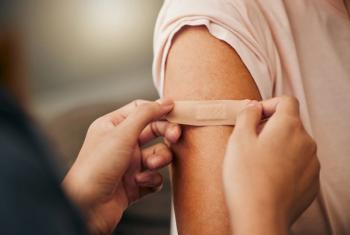
Alternative therapies for colic appear promising, but studies are flawed
The use of fennel extract, certain mixed herbal teas, and sugar solutions appear to lessen symptoms of infantile colic (IC), but studies of these complementary and alternative therapies have major limitations, according to a study published in Pediatrics.
The use of fennel extract, certain mixed herbal teas, and sugar solutions appear to lessen symptoms of infantile colic (IC), but studies of these complementary and alternative therapies have major limitations, according to a study published in Pediatrics.
Researchers in the United Kingdom conducted a literature search of 5 electronic databases to identify randomized clinical trials of complementary and alternative medicines and nutritional supplements for the treatment of IC. Fifteen studies published between 1991 and 2008 involving 944 infants were selected for review.
Only 8 of the randomized trials had good methodologic quality. Eleven studies had encouraging results for alternative therapies. However, all the studies had flaws. The majority failed to conduct power calculations, and independent replications were lacking for most therapies.
Three of the studies included herbal supplements. Infants in 1 study had significant improvement in IC symptoms when given fennel extract versus placebo. In another study, infants improved with herbal tea (fennel, chamomile, vervain, licorice, and balm-mint). The third study found a reduction in crying with Colimil, an herbal formulation that contains fennel, lemon balm, and German chamomile.
Two studies showed that glucose and sucrose solutions were effective in reducing colic symptoms compared with placebo. One study looked at using a soy-enriched formula. Unfortunately, it had little effect on IC.
In another study, 95% of infants who received probiotics responded to treatment compared with 7% who received simethicone. “This is pertinent given that simethicone is considered the best available and most commonly prescribed treatment for colic, although it previously has been shown to be no more effective than placebo,” note the researchers.
One study compared massage to a vibrating crib, but there was no difference in symptoms with either intervention. Another study found no significant difference between nonspecific reflexology and colic-specific reflexology.
“The notion that any form of complementary and alternative medicine is effective for infantile colic currently is not supported from the evidence from the included randomized clinical trials,” conclude the researchers. “Additional replications are needed before firm conclusions can be drawn.”
Perry R, Hunt K, Ernst E. Nutritional supplements and other complementary medicines for infantile colic: a systematic review. Pediatrics. 2011;127(4);720-733.
Newsletter
Access practical, evidence-based guidance to support better care for our youngest patients. Join our email list for the latest clinical updates.










